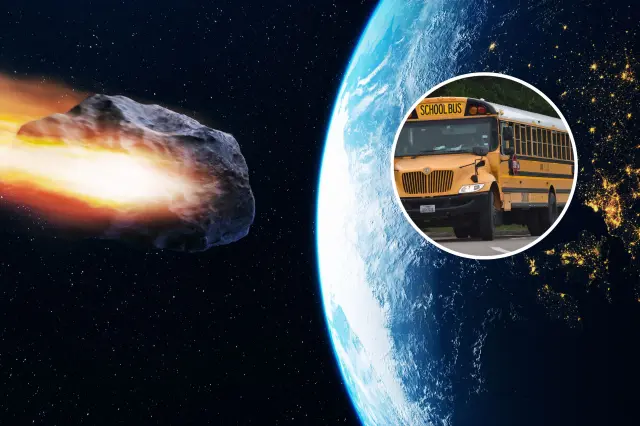-
Dog Owner Hears ‘Squeaking’ Near Christmas Tree—Can’t Help but Smile at Why - 29 mins ago
-
ICE tore apart families. The community brought back some Christmas joy - 35 mins ago
-
Heavy Rains and Floods Threaten California on Christmas Day - 48 mins ago
-
How the Grinch went from a Yuletide bit player to a Christmas A-lister - about 1 hour ago
-
Pope Leo Surprises St. Peter’s Crowd Before Christmas Eve Mass - 2 hours ago
-
Couple Told Labrador Puppy Will Be ‘So Big,’ What She Grows Into Goes Viral - 2 hours ago
-
Vikings GM Drops Hint on JJ McCarthy’s Future After Up and Down Year - 2 hours ago
-
Martin Scorsese: Rob Reiner Had Me in the Palm of His Hand - 2 hours ago
-
Why Russia Is Likely to Reject the New US-Ukrainian Peace Plan - 3 hours ago
-
I’ve Been the U.N. High Commissioner for Refugees for a Decade. This Is the Crisis I See. - 4 hours ago
NASA Tracking Bus-Sized Asteroid Approaching Earth This Week
NASA is monitoring a bus-sized asteroid that is zipping towards our planet at more than 18,300 miles per hour, according to the Center for Near Earth Object Studies (CNEOS).
The asteroid, known as “2025 VP1”, measures around 37 feet in diameter and is expected to come as close as around 361,000 miles from the Earth on Tuesday, according to NASA’s Jet Propulsion Laboratory (JPL).
2025 VPI is not the only space rock being tracked by NASA this week. The agency is also monitoring “2025 VC4,” another bus-sized asteroid, that’s projected to make its closest approach at around 1.24 million miles from our planet on Tuesday.
And abridge-sized asteroid called “3361 Orpheus (1982 HR)”—measuring around 1,400 feet in diameter—is expected to pass the Earth at around 20,000 miles per hour on Wednesday.

Asteroids are small, rocky masses left over from the formation of the solar system about 4.6 billion years ago. They are found concentrated in the main asteroid belt, which lies around the sun between the orbits of Mars and Jupiter.
The so-called “near-Earth objects” are asteroids whose orbits bring them within 120 million miles of the sun and into the Earth’s “orbital neighborhood.”
“The majority of near-Earth objects have orbits that don’t bring them very close to Earth, and therefore pose no risk of impact,” according to NASA.
A small portion of them, however, known as potentially hazardous asteroids (PHAs), do require closer tracking. Measuring over around 460 feet in size, PHAs have orbits that bring them as close as within 4.6 million miles of the Earth’s orbit around the sun, the space agency says.
Despite the number of PHAs out in our solar system, none are likely to hit Earth any time soon.
“The ‘potentially hazardous’ designation simply means over many centuries and millennia the asteroid’s orbit may evolve into one that has a chance of impacting Earth. We do not assess these long-term, many-century possibilities of impact,” Paul Chodas, manager of the CNEOS, previously told Newsweek.
Do you have a tip on a science story that Newsweek should be covering? Do you have a question about asteroids? Let us know via science@newsweek.com.
Source link















